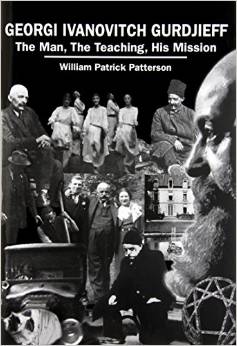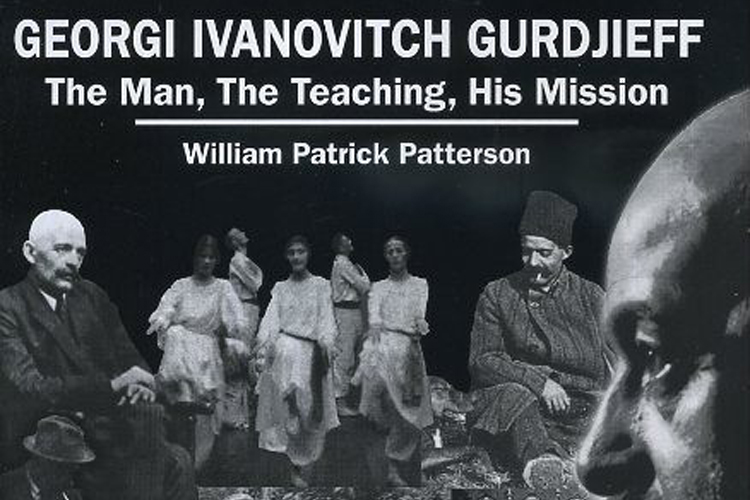 Georgi Ivanovitch Gurdjieff: The Man, The Teaching, His Mission
Georgi Ivanovitch Gurdjieff: The Man, The Teaching, His Mission
William Patrick Patterson. Arete Communications (www.thegurdjiefflegacyfoundation.org), 2014. PP. XVII+650. $45
Reviewed by Jeff Zaleski
There are good reasons to read this hefty book, the latest from William Patrick Patterson, one of today’s best-known authors of books about the spiritual master G.I. Gurdjieff (1872?–1949) and his teaching, often called the Fourth Way.
Readers will find here an expertly assembled narrative—a chronological mosaic of the activities, inner and outer, of Gurdjieff and his followers, pieced together from the records kept by many. The story begins with Gurdjieff’s birth and quickly moves to the first dated entry, “13 November 1914, Moscow,” which finds Russian philosopher P.D Ouspensky (or “Uspenskii,” as Patterson spells it) sitting in a newspaper office noting a story about an upcoming ballet, The Struggle of the Magicians. The book then proceeds year by year, month by month, often day by day, ending with Gurdjieff’s death on October 29, 1949, and his burial. In its range and depth, this account ranks with James Moore’s Gurdjieff and James Webb’s The Harmonious Circle as a vivid portrait of the great and enigmatic teacher and of the men and women he taught.
The Gurdjieff in these pages appears sui generis: a man of immense power, understanding, and ability, impossible to predict or understand fully—“the Unknowable Gurdjieff” as one of his more celebrated pupils, writer Margaret Anderson, had it. Yet there are astonishing moments here that reveal something about him and, as Patterson puts it, his mission:
10 February 1936. Gare café, Paris….
Writes Krokodeel [Gurdjieff’s nickname for his pupil Kathryn Hulme, who would go on to write the novel The Nun’s Story]: “Gurdjieff gave us a pledge to say each time before beginning the new exercise—that we would not use this for the self, but for all humanity. This ‘good-wishing-for-all’ vow, so deeply moving in intent, had a tremendous effect upon me. For the first time in my life, I felt that I was truly doing something for humanity as I strove to make my own molecule of it more perfect. The meaning of this work, which at first had seemed quite egotistical and self-centered, suddenly blossomed out like a tree of life encompassing in its myriad branching the entire human family.”
Or this:
1 November 1936. 11 rue Labie. Georgette Leblanc knocks at Gurdjieff’s door….
He steps back and leans against the wall, the light from the little salon illuminating him fully.
“For the first time,” Georgette says, “he let me see what he really is. It was as if he had torn off the masks behind which he is obliged to hide himself. His face was stamped with a charity that embraced the whole world. Transfixed, standing before him, I saw him with all my strength and I experienced a gratitude so deep, so sad, that he felt a need to calm me. With an unforgettable look, he said—“God helps me.”
Even those sufficiently versed in the Gurdjieff literature to know of these events may find new material here, for included in the book are a number of historical documents that, as far as this reviewer is aware, appear nowhere else in readily available book form. Among them are two revelatory essays by P.D. Ouspensky, Gurdjieff’s most famous student who nonetheless broke from Gurdjieff after only a few years of instruction: “Why I Left Gurdjieff” and “The Struggle of the Magicians: Where I Diverge from Gurdjieff.” That Patterson has managed to find and present these essays continues his effort to make available to the general reader previously difficult-to-obtain documents, an effort begun in his book Voices in the Dark, the first public appearance of transcripts from Gurdjieff’s wartime (WWII) meetings.
Also included in this new book are such rarities as Gurdjieff’s scenario for his ballet The Struggle of the Magicians and Frank Lloyd Wright’s “Gurdjieff at Taliesin” (“His knowledge of human nature and all its foibles seems perfect, and he does not hesitate to use this knowledge for his own ends.…”)
In the book as well, and worthy of a label “Caution advised,” are several essays by Patterson on ancillary matters Gurdjieffian. Among these are “Gurdjieff in Egypt: The Origin of Esoteric Knowledge,” “Gurdjieff and Christianity,” and “Gurdjieff, Uspenskii, Orage & Bennett,” in which the author explores the evident motivations and flaws of three of Gurdjieff’s most influential students. Patterson has been studying the Gurdjieff Work and its history for decades now so it is not surprising that he has come to conclusions about a number of the questions and mysteries that surround Gurdjieff’s teaching, but it is essential to note that his conclusions, while informed, are not the last word and that alternate perspectives and understandings exist.
This reviewer wishes to note also that Patterson is a controversial figure in Gurdjieff studies. This is not so much for his books, which include perhaps the first-ever memoir of the Gurdjieff Work after Gurdjieff (Eating the “I”: 1991), as for his decision to maintain a distance from the premier vehicle for the preservation of Gurdjieff’s teaching, the Gurdjieff Foundation (where he studied with Lord John Pentland for a number of years), and to establish his own program of teaching the Fourth Way. To comment on Patterson’s teaching is outside the scope of this review, which means to assess one book, not its author and his activities. It seems important to recognize, however, that Gurdjieff has influenced many people in myriad ways, and that in these uncertain times, all those who hold an allegiance to Gurdjieff’s teaching, or indeed to any other authentic spiritual path, likely will benefit most from sharing. As Lillian Firestone writes in the opening essay in this issue, “Together the way forward is found again. We are mirrors for each other.” ♦
Jeff Zaleski is editor and publisher of Parabola.
